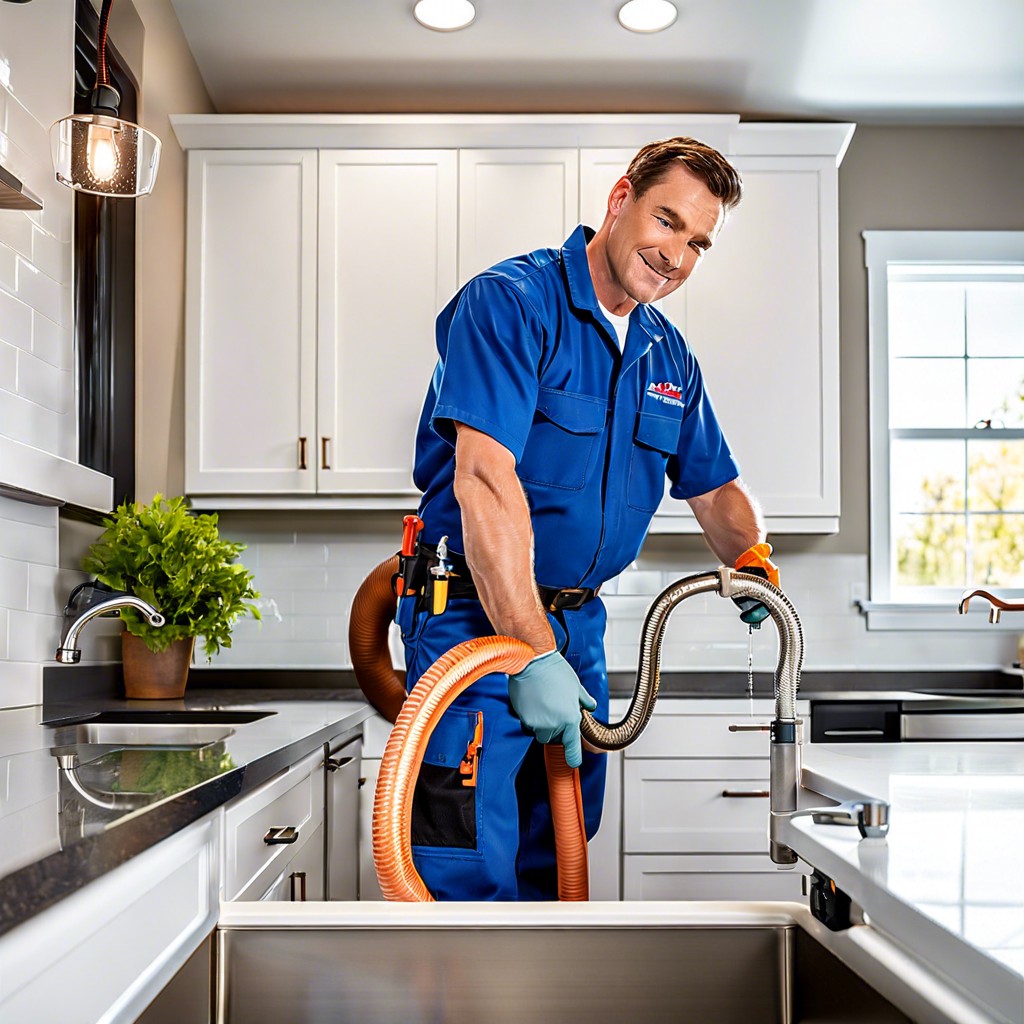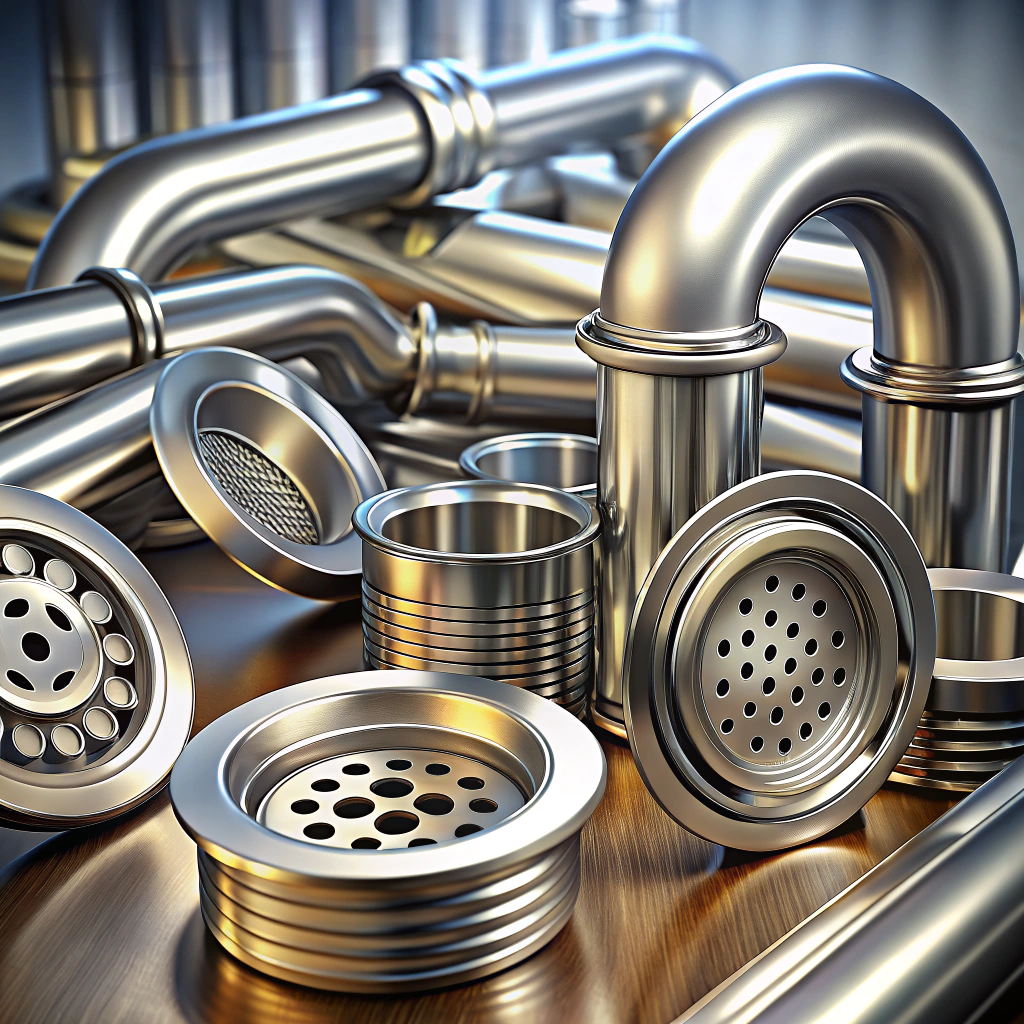Last updated on
Discover the factors that affect a plumber’s rate for unclogging a kitchen sink and get a clearer picture of potential costs.
Key takeaways:
- Plumbers charge 0 to 0+ to unclog a kitchen sink.
- Factors include accessibility, severity of clog, and location.
- Urgency and emergency calls can result in higher costs.
- Signs of a clogged drain include slow draining and gurgling sounds.
- Call a plumber when water backs up or there are unpleasant odors.
What's Inside
Average Cost to Professionally Snake a Drain

Dipping your toes into the financial pools of plumbing? An average bill for snaking a drain might make you wince. Costs can range from a mere $100 to a more burdensome $250 or higher. The variation is largely dependent on accessibility and severity of the clog.
Quick tip: consider this an investment to keep your kitchen’s veins free from clots.
On the brighter side, some plumbers charge a flat rate for a basic snaking service. Alarm bells should ring if prices seem too good to be true; it might indicate a lack of experience or inadequate service.
Keep in mind, unexpected issues like a broken pipe can bump up the cost. It’s like finding an extra scoop of ice cream at the bottom of the cone—a surprise, not always pleasant.
Surge pricing isn’t just for taxis; plumbing emergencies during off-hours can see a spike in rates. In other words, timing is everything. Hope for a clog during business hours to avoid the after-hour premium.
Let’s not forget location—where you live plays a vital role in pricing. Busy city dwellers often pay more than those in a peaceful countryside setting.
Remember, a smoothly running kitchen sink is like a melody. Don’t let a clog hit a sour note in that tune.
Factors That Affect Drain Cleaning Costs
Sink blockages can throw a wrench in your day, and the cost of clearing them up varies as much as sink designs themselves. Think of drainage intricacies and plumbing labyrinth as a factor—simpler pipe configurations generally mean lower prices.
Accessibility is also key. The easier it is for a plumber to reach the clog, the less it’ll pinch your wallet. Imagine a clog hiding behind a cabinet—like a shy cat—it could take more time and effort to coax it out, hiking up the price.
The nature of the beast—or in this case, the clog—also impacts the bill. The Gordian knot of grease, soap, and food scraps requires a different tactic than a simple hairball blockade. Tougher clogs may call for power tools or even a hydro-jetting service, which naturally scales up the cost.
Don’t forget about good ol’ geography. Living in high-cost urban areas can inflate plumbing prices like a hot air balloon. Meanwhile, rates might be more down-to-earth in rural locales.
Finally, urgency is the spice of life, and emergency calls—like a knight summoned to a troubled kingdom—are priced at a premium. Need a plumber to sally forth in the dead of night or on a festive holiday? Be ready for the cost to reflect their rush and rescue efforts.
Navigating these factors can give you a clearer picture of the potential costs, prepping your budget before the plumber’s descent into the sink’s depths.
Signs of A Clogged Drain
Ever had water in your kitchen sink that seems to be throwing a pool party because it just won’t go down the drain? That’s a tell-tale sign you may be dealing with a blockage. If you notice it’s draining slower than a snail on a leisurely stroll, it’s another hint. But it can get sneakier: listen for gurgling sounds. It’s like your sink is trying to talk to you, telling you something’s not right inside those pipes.
Water backing up is another red flag. Imagine you’re rinsing off your dishes, and the water starts rising like an unexpected tide; that’s not good. It’s kind of like the plumbing version of an SOS. Lastly, if there’s an unpleasant odor wafting up, like last week’s leftovers mixed with a swamp-like aroma, it’s high time to suspect a clog is forming a sinister alliance with decaying food somewhere down in the dark depths of your pipes. These are your hints to grab the phone and get an expert on the line before your kitchen turns into a miniature lake.
When to Call a Plumber for a Clogged Drain
The battle between you and your pesky sink has raged on long enough. You’ve taken the plunge with plungers and home remedies, but if the water still puddles with no place to go, it’s time for reinforcements.
One clear sign is water backing up. It means the blockage isn’t budging, and the expertise and equipment of a professional are your next step.
Next up, listen for gurgling sounds. If it sounds like your sink is trying to talk to you, heed the call. Those noises suggest air trapped by a clog struggling to escape. A plumber can interpret what your sink is saying.
Have you spotted water in places it shouldn’t be? If there’s dampness under the sink or a mysterious puddle on the floor, the clog may be part of a bigger issue. A plumber can sleuth out the cause.
Lastly, if you smell something foul, don’t just hold your nose and hope for the best. Unpleasant odors can indicate decaying food trapped in your pipes — a feast for bacteria and a signal that a pro should take a look.
Remember, haste makes waste, but delay could escalate a simple clog into a full-blown plumbing saga. If these signs are all too familiar, it could be time to drop the DIY kit and dial in the experts.
How To Prevent Drains From Clogging
Staving off a gunked-up kitchen sink demands a pinch of foresight and a sprinkle of daily habits. Channel your leftovers into the trash, not the disposal—that means no greasy, starchy, or fibrous foods that wage war on your pipes. Employ a strainer to catch those deceitful particles; it’s a simple guard that pays dividends. Engage in a weekly ritual of flushing out the pipes with boiling water chased by a cool rinse – this can work wonders in dislodging lurking build-up.
If the aroma of vinegar makes you cringe, it’s time to toughen up, because a baking soda and vinegar mix plunged down the drain once a month assures a smooth flow. Let the fizzing duo perform their magic for half an hour, then show them the way out with piping hot water. Embrace this concoction, and you’ll dance past the hurdles of blockage like a plumbing maestro.
Lastly, your disposal is not a waste warrior. Respect it with regular sharpness checks. Feed it a handful of ice cubes biweekly, and it’ll keep its blades sharp for slicing and dicing those bits that do sneak through.
Adopt these habits, and you’ll find your plumber on speed dial collecting cobwebs rather than your hard-earned cash.




